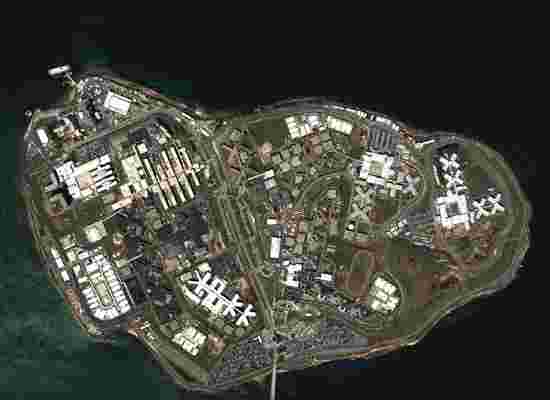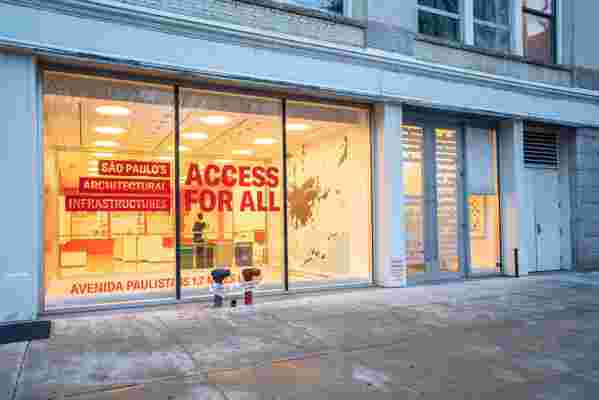AIA NY Takes Strong Stand Against Designing American Jails and Prisons
In the midst of the racial justice protests sweeping the country, the American Institute of Architects’ New York chapter launched an unprecedented stance against designing American prisons and jails.
“In our code of ethics it says we will do no harm,” says AIA NY’s president, Kim Yao. “These spaces are used for harm and with racial bias. We’re one piece of that bigger puzzle, but we felt it was really important to make this statement and the strongest way to say it was to ask our members to refrain from this work.” She added that the group wants to raise their members’ awareness of their choices and the implications of the work they do. And by doing that, it may help the broader movement for transformation of the criminal justice system.
The decision comes after a wave of demands from organizations across the nation, such as Designing Justice + Designing Spaces, the Design as Protest collective, and Architects/Planners/Designers for Social Responsibility, in which advocates say architects have an obligation to protect health, safety, and welfare through the spaces they design.
After the killings of George Floyd, Ahmaud Arbery, and Breonna Taylor, and following a June op-ed by New York Times architecture critic Michael Kimmelman, Yao said the New York chapter was prompted to take responsibility and action. AIA NY organized a working group from a selection of board members who met regularly starting in June to implement change on an institutional level. They listened to people who work directly in the space, architects advocating for change, and prison abolitionists.

An aerial view of New York City's infamous Rikers Island correctional facility.
On September 30, the chapter released their statement, urging architects to no longer design “unjust, cruel, or harmful spaces of incarceration within the current United States justice system.” Yao says that while it’s not in the organization’s purview to bar members from designing jails and prisons, it urges members “to shift their efforts towards supporting the creation of new systems, processes, and typologies based on prison reform, alternatives to imprisonment, and restorative justice.” In its statement, AIA NY asks its sister chapters to do the same.
For 20 years Raphael Sperry, an architect, advocate, and secretary of Architects/Designers/Planners for Social Responsibility, has been asking the national professional association, AIA, and industry giants to stop designing jails and prisons. “The New York chapter’s stance is fantastic. It’s a huge step forward,” the architect and advocate tells AD from his home in San Francisco. “Their stance faces head-on the national frustration with our criminal justice system.”
New York is the first chapter in the AIA to take this position. In 2013, the San Francisco chapter came out against execution chambers and supermax prisons. “It’s not just our group organizing around this issue,” Sperry says. “There are young architects and people of color advocating. It’s really exciting to see what they can achieve.”
But some architects don’t support the chapter’s stance against building these structures.
“There are varying degrees of outrage,” says Frank Greene, who has dedicated decades of his career to justice architecture, the field of designing jails, prisons, courthouses, and police stations. Greene is a founding member of the New York chapter’s Academy of Architecture for Justice, a networking group for those in the justice field.

AIA NY Center for Architecture.
“For years we’ve been designing facilities for the justice system that are full of light and air and programming space. They are not cruel by any definition. Why are these pejorative terms being used?” asks Greene, who considers himself a transformist. “Our goal is to transform the system into one that’s based on sustainable principles, and one that views everyone as a valuable human being.”
Greene believes in the power of design to transform people’s lives. Since he began his career in the justice field in the ’80s, the prison system in the United States has seen massive reform, he adds: “Over the last 10 years there’s been a groundswell for a transformative change in the system.”
The Academy of Architecture for Justice will work with the AIA NY chapter in hopes of achieving “measurable change” with prison reform. Greene said the AAJ is hopeful that New York City’s borough-based jail program to replace Rikers Island will be used as an international model to transform correctional facilities, while showing measurable change. “The AIA should support this,” Greene notes.
In order to take actionable steps to address the racism sustained by America’s criminal justice system, AIA NY will also launch new programming late this fall. It will examine architecture’s role in the criminal justice system and ensure that all jurors judging award ceremonies and competitions are aware of AIA NY’s position. Further, its political action committee, the AIA New York Political Action Fund, will support candidates who believe in reducing criminal justice facility construction and implementing further criminal justice reforms, and will lobby to limit the construction of new correctional facilities.
“We see this as just the beginning of a long process,” says AIA NY president Kim Yao. “It’s a call for action for our members. We have a responsibility as an organization to hear multiple sides, diverse voices, and the challenges around incarceration. We will continue to educate and learn.”